 Jeep Cherokee Service ManualTransmission and transfer case » NV3550 manual transmission
Jeep Cherokee Service ManualTransmission and transfer case » NV3550 manual transmission
Disassembly and assembly
Disassembly and assembly
TRANSMISSION
DISASSEMBLY
FRONT HOUSING
(1) If necessary, temporarily reinstall shift lever assembly. Shift transmission into Neutral.
(2) If lubricant was not drained out of transmission during removal, remove drain plug and drain lubricant into container at this time.
(3) Inspect drain plug magnet for debris.
(4) Remove backup light switch. Switch is located on passenger side of rear housing (Fig. 14).

Fig. 14 Backup Light Switch Location
1 - BACKUP LIGHT SWITCH
(5) If necessary, remove shift tower bolts and remove tower and lever assembly (Fig. 15).
(6) Remove shift shaft lock bolt (Fig. 16). Bolt is located at top of front housing just forward of shift tower. Bolt is a shoulder bolt that secures the shift shaft bushing and lever.
(7) Use Remover 8117 and suitable slide hammer to remove shift shaft detent plug.

Fig. 15 Shift Tower Removal
1 - SHIFT TOWER AND LEVER ASSEMBLY
2 - SHIFT SOCKET
3 - SEAL

Fig. 16 Shift Shaft Lock Bolt Removal
1 - SHIFT SHAFT LOCK BOLT
2 - SHAFT SOCKET
(8) Remove shift shaft detent plunger and spring (Fig. 17). Use pencil magnet to remove spring then plunger, if necessary.
(9) Remove bolts attaching input shaft bearing retainer to front housing (Fig. 18).

Fig. 17 Detent Plunger And Spring Removal
1 - FRONT HOUSING
2 - PLUG
3 - SPRING
4 - PLUNGER

Fig. 18 Input Shaft Bearing Retainer Bolt Removal-Typical
1 - INPUT SHAFT BEARING RETAINER
2 - RETAINER BOLTS
(10) Remove input shaft bearing retainer. Use pry tool to carefully lift retainer and break sealer bead (Fig. 19).

Fig. 19 Loosening Bearing Retainer Sealer Bead-Typical
1 - PRYTOOL
2 - INPUT SHAFT BEARING RETAINER
(11) Remove bearing retainer from input shaft (Fig. 20).

Fig. 20 Input Shaft Bearing Retainer Removal-Typical
1 - SHAFT BEARING
2 - BEARING RETAINER
3 - INPUT SHAFT
(12) Remove snap ring that secures input shaft in front bearing (Fig. 21).
(13) Remove bolts that attach front housing to rear housing (Fig. 22). Three bolts at extreme rear of housing are actually for the output shaft bearing retainer. It is not necessary to remove all three bolts at this time. Leave at least one bolt in place until geartrain is ready to be removed from case.

Fig. 21 Input Shaft Snap Ring Removal-Typical
1 - INPUT SHAFT SNAP RING
2 - OIL FEED

Fig. 22 Housing And Bearing Retainer Bolt Locations
1 - RETAINER BOLTS
2 - HOUSING BOLTS
3 - RETAINER BOLT
4 - HOUSING BOLT LOCATIONS
(14) Separate front housing from rear housing (Fig. 23). Use plastic mallet to tap front housing off alignment dowels.

Fig. 23 Front Housing Removal
1 - FRONT HOUSING
2 - REAR HOUSING
3 - DOWELS (2)
4 - PLASTIC MALLET

Fig. 24 Input Shaft Bearing and Countershaft Front Bearing Race Location
1 - INPUT SHAFT BEARING
2 - FRONT HOUSING
3 - COUNTERSHAFT FRONT BEARING
(16) Note position of input shaft, shift shaft and forks, and geartrain components in housing (Fig. 25).

Fig. 25 Geartrain And Shift Component Identification
1 - SHIFT SHAFT
2 - BUSHING
3 - REAR HOUSING
4 - REVERSE IDLER AND SUPPORT
5 - OUTPUT SHAFT AND GEARS
6 - COUNTERSHAFT
7 - 1-2 FORK
8 - INPUT SHAFT
9 - 3-4 FORK
SHIFT SHAFT, SHIFT FORKS AND REVERSE IDLER SEGMENT
(1) Unseat the roll pin that secures the shift socket tot he shift shaft with Special Tool 6858 as follows: (a) Position Tool 6858 on the shift shaft. Center the tool over the roll pin and verify that the tool legs are firmly seated on the shift socket (Fig. 26).
(b) Tilt the socket toward the side of the case.
This positions the roll pin at a slight angle to avoid trapping the pin between the gear teeth.
(c) Tighten the tool punch to press the roll pin downward and out of the shift socket (Fig. 26). The roll pin does not have to be completely removed from the shift socket. The roll pin must only be clear of the shift shaft. Be careful not to push the pin into the geartrain.
(2) Using a hammer and suitable punch, drive out roll pin that secures shift bushing and lever to shift shaft (Fig. 27).
NOTE: Be sure to use the proper size punch to avoid bending the shift shaft.

Fig. 26 Removing the Shift Socket Roll Pin
1 - SPECIAL TOOL
6858
2 - SHIFT SOCKET

Fig. 27 Removing Shift Shaft Lever And Bushing Roll Pin
1 - PIN PUNCH
2 - BUSHING AND LEVER
3 - SHIFT SHAFT
(3) Pull shift shaft straight out of rear housing, shift socket, fifth-reverse fork, and 1-2 fork (Fig. 28).
(4) Remove shift socket from rear housing (Fig.
29).
(5) Remove lever and bushing (Fig. 30).
(6) Remove 3-4 fork. Rotate 3-4 fork around synchro sleeve until fork clears shift arms on 1-2 and fifth-reverse forks. Then remove 3-4 fork (Fig. 31).
(7) Remove the reverse idler shaft support bolt (front bolt) (Fig. 32).

Fig. 28 Shift Shaft Removal
1 - SHIFT SHAFT
2 - 3-4 FORK
3 - SHAFT DETENT NOTCHES

Fig. 29 Shift Socket And Roll Pin
1 - SHAFT BORE
2 - ROLL PIN
3 - SHIFT SOCKET

Fig. 30 Removing Shift Shaft Lever And Bushing
1 - SHAFT LEVER AND BUSHING
2 - 3-4 FORK

Fig. 31 Removing 3-4 Shift Fork
1 - 3-4 FORK
2 - 1-2 AND 5TH-REVERSE FORK ARMS
3 - 3-4 SYNCHRO SLEEVE
(8) Loosen rear reverse idler shaft bolt (rear bolt) (Fig. 32).

Fig. 32 Reverse Idler Shaft/Support
1 - SUPPORT BOLT
2 - SHAFT BOLT
(9) Remove reverse idler shaft support segment by sliding it straight out of housing.
(10) Support geartrain and rear housing on Assembly Fixture Tool 6747 as follows: (a) Adjust height of reverse idler pedestal rod until the reverse idle shaft bottoms in Cup 8115.
(b) Position Adapters 6747-1A and 6747-2A on Assembly Fixture 6747.
(c) Slide fixture tool onto input shaft, countershaft and idler gear (Fig. 33).
(d) Stand geartrain and rear housing upright on fixture (Fig. 34). Have helper hold fixture tool in place while housing and geartrain is being rotated into upright position.

Fig. 33 Installing Assembly Fixture On Geartrain
1 - SPECIAL TOOL 6747
2 - SPECIAL TOOL 6747-1A
3 - SPECIAL TOOL 8115
4 - REVERSE IDLER PEDESTAL
5 - SPECIAL TOOL 6747-2A

Fig. 34 Geartrain And Housing Mounted On Fixture Tool
1 - INPUT SHAFT
2 - COUNTERSHAFT
3 - SPECIAL TOOL 6747
(11) Remove rear bolt holding reverse idler shaft in housing.
REAR HOUSING REMOVAL-2WD
(1) On 2-wheel drive transmission, remove three bolts that attach output shaft bearing retainer to rear case (Fig. 35). Bolts are rear of shift tower opening.

Fig. 35 Removing/Installing Output Shaft Bearing Retainer Bolts-2WD
1 - OUTPUT SHAFT BEARING RETAINER BOLTS (THIRD BOLT IS AT OPPOSITE SIDE OF CASE)
(2) Unseat output shaft bearing from bearing bore in rear housing. Use plastic or rawhide mallet to tap rear housing upward and off output shaft bearing as shown (Fig. 36).
(3) Lift rear housing up and off geartrain (Fig. 37).
(4) Remove countershaft rear bearing from countershaft (Fig. 38).
(5) Examine condition of bearing bore and idler shaft notch in rear housing. Replace housing if any of these components are damaged.

Fig. 36 Unseating Rear Housing From Output Shaft Bearing-2WD
1 - REAR HOUSING
2 - PLASTIC OR RAWHIDE MALLET
3 - FIXTURE TOOL
REAR ADAPTER HOUSING REMOVAL-4WD
(1) Locate dimples in face of rear seal (Fig. 39).
Use a suitable slide hammer mounted screw to remove seal by inserting screw into seal at dimple locations (Fig. 40).

Fig. 37 Rear Housing Removal-2WD
1 - REAR HOUSING
2 - SHIFT FORKS AND GEARTRAIN

Fig. 38 Remove Countershaft Rear Bearing
1 - COUNTERSHAFT REAR BEARING
2 - OUTPUT SHAFT
3 - COUNTER SHAFT

Fig. 39 Location Of Dimples In Seal Face-4WD
1 - LOCATION OF DIMPLES
2 - SEAL FACE

Fig. 40 Rear Seal Removal-4WD
1 - SLIDE HAMMER
2 - REMOVER TOOL
3 - REAR SEAL
(2) Remove rear bearing snap ring from output shaft with heavy duty snap ring pliers (Fig. 41).
(3) Lift rear adapter housing upward and off geartrain (Fig. 42).

Fig. 41 Rear Bearing Snap Ring Removal-4WD
1 - HEAVY DUTY SNAP RING PLIERS
2 - REAR BEARING SNAP RING
3 - OUTPUT SHAFT
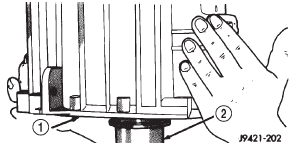
Fig. 42 Rear Adapter Housing Removal
1 - REAR ADAPTER HOUSING
2 - OUTPUT SHAF
(4) Remove bearing retainer bolts and remove rear bearing retainer and rear bearing (Fig. 43). Use hammer handle to push or tap bearing out of housing if needed.
(5) Examine condition of bearing bore, countershaft rear bearing race and idler shaft notch in rear housing. Replace housing if race, bore or notch are worn or damaged.

Fig. 43 Rear Adapter Housing Components
1 - BEARING RETAINER
2 - RETAINER BOLTS (3)
3 - IDLER SHAFT NOTCH
4 - COUNTERSHAFT REAR BEARING RACE
5 - REAR BEARING
GEARTRAIN DISASSEMBLY FROM FIXTURE
(1) Remove reverse idler gear assembly from assembly fixture cup.
(2) Remove 1-2 and fifth-reverse forks from synchro sleeves.
(3) Slide countershaft out of fixture tool.
(4) Remove output shaft bearing retainer from rear surface of fifth gear (retainer will drop onto gear after bolts are removed).
(5) Lift and remove output shaft and gears off input shaft.
(6) Lift and remove input shaft, pilot bearing and fourth gear synchro ring from assembly fixture tool.
OUTPUT SHAFT
NOTE: The synchronizer hubs and sleeves are different and must not be intermixed. It is recommended that each synchronizer unit be removed as an assembly to avoid intermixing parts. It is also recommended that each synchro hub and sleeve be marked with a scriber or paint for correct assembly reference.
(1) Remove snap ring that secures 3-4 synchro hub on output shaft.
(2) Remove 3-4 synchro assembly, third gear synchro ring, and third gear with shop press and Remover Tool 1130. Position Tool 1130 between second and third gears.
(3) Remove third gear needle bearing (Fig. 44).

Fig. 44 Third Gear Needle Bearing Removal
1 - THIRD GEAR NEEDLE BEARING
(4) Remove retaining ring that secures two-piece thrust washer on shaft (Fig. 45). Use small pry tool to remove retaining ring.

Fig. 45 Thrust Washer Retaining Ring Removal
1 - PRYTOOL
2 - THRUST WASHER RETAINING RING
(5) Remove two-piece thrust washer (Fig. 46). Note position of washer locating lugs in shaft notches for installation reference.

Fig. 46 Two-Piece Thrust Washer
1 - SECOND GEAR
2 - THRUST WASHER (2-PIECE)
3 - WASHER LOCATING LUG

Fig. 47 Second Gear And Needle Bearing Removal
1 - SECOND GEAR
2 - SECOND GEAR NEEDLE BEARING
(7) Remove second gear synchro ring, synchro friction cone, and synchro cone (Fig. 48).
(8) Remove interm ring.
(9) Remove 1-2 synchro hub snap ring.
(10) Remove 1-2 synchro hub and sleeve and first gear from output shaft with shop press and Remover Tool 1130 (Fig. 49). Position Tool 1130 between first and reverse gears.

Fig. 48 Second Gear Synchro Ring And Cones Removal
1 - 1-2 SYNCHRO HUB AND SLEEVE
2 - INTERM RING
3 - SYNCHRO FRICTION CONE
4 - SYNCHRO CONE
5 - SYNCHRO RING

Fig. 49 Hub And Sleeve Removal-1-2 Synchro
1 - 1-2 SYNCHRO HUB AND SLEEVE
2 - SPECIAL TOOL
1130
(11) Remove first gear needle bearing (Fig. 50).
(12) Remove output shaft bearing snap ring (Fig.
51).
(13) On 2-wheel drive models, remove output shaft bearing.
(14) Remove fifth gear (Fig. 52).

Fig. 50 First Gear Needle Bearing Removal
1 - FIRST GEAR NEEDLE BEARING

Fig. 51 Output Shaft Bearing Snap Ring Removal
1 - OUTPUT SHAFT BEARING
2 - BEARING SNAP RING
3 - SNAP RING PLIERS

Fig. 52 Fifth Gear Removal
1 - FIFTH GEAR AND SYNCHRO RING
(15) Remove fifth gear needle bearing. Spread bearing apart just enough to clear shoulder on output shaft (Fig. 53).

Fig. 53 Fifth Gear Needle Bearing Removal
1 - FIFTH GEAR NEEDLE BEARING (SPREAD BEARING TO CLEAR SHOULDER ON SHAFT)
(16) Remove fifth-reverse synchro hub snap ring (Fig. 54).

Fig. 54 Fifth-Reverse Synchro Hub Snap Ring Removal
1 - FIFTH-REVERSE SYNCHRO HUB AND SLEEVE
2 - SYNCHRO HUB SNAP RING
3 - SNAP RING PLIER
(17) Remove fifth-reverse synchro hub and sleeve with shop press (Fig. 55).
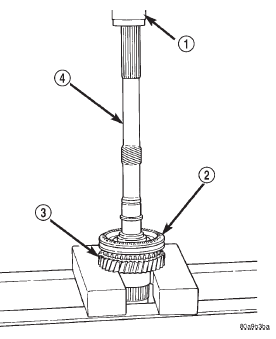
Fig. 55 Fifth-Reverse Synchro Hub And Sleeve Removal
1 - PRESS
2 - FIFTH-REVERSE SYNCHRO HUB AND SLEEVE
3 - REVERSE GEAR
4 - OUTPUT SHAFT
(18) Remove reverse gear and needle bearing (Fig.
56).

Fig. 56 Reverse Gear And Needle Bearing Removal
1 - REVERSE GEAR AND NEEDLE BEARING

Fig. 57 Reverse Idler Components
1 - SNAP RING
2 - FLAT WASHER
3 - WAVE WASHER
4 - THRUST WASHER
5 - REVERSE IDLER GEAR
6 - IDLER GEAR BEARING
7 - IDLER SHAFT
8 - THRUST WASHER
9 - SNAP RING
10 - THRUST WASHER LOCK BALLS
REVERSE IDLER DISASSEMBLY
(1) Remove idler gear snap rings (Fig. 57).
(2) Remove thrust washer, wave washer, thrust plate and idler gear from shaft.
(3) Remove idler gear needle bearing from shaft.
ASSEMBLY
Gaskets are not used in the NV3550 transmission.
Sealers are used at all case joints. Recommended sealers are Mopart Gasket Maker for all case joints and Mopart silicone sealer, or equivalent, for the input shaft bearing retainer. Apply these products as indicated in the assembly procedures.
NOTE: It is very important that the transmission shift components be in Neutral position during assembly. This is necessary to prevent damaging synchro and shift components when the housings are installed.
The 3-4, 1-2 and fifth-reverse synchro hub snap rings can be fitted selectively. New snap rings are available in 0.05 mm (0.0019 in.) thickness increments.
Use the thickest snap ring that will fit in each snap ring groove.
SYNCHRONIZER
The easiest method of assembling each synchro is to install the springs, struts and detent balls one at a time as follows: (1) Slide the sleeve part way onto the hub. Leave enough room to install the spring in the hub and the strut in the hub groove.
(2) Install the first spring in the hub. Then install a strut over the spring. Be sure the spring is seated in the spring bore in the strut.
(3) Slide the sleeve onto the hub just far enough to hold the first strut and spring in place.
(4) Place the detent ball in the top of the strut.
Then carefully work the sleeve over the ball to hold it in place. A small flat blade screwdriver can be used to press the ball into place while moving the sleeve over it.
(5) Repeat the procedure for the remaining springs, struts and balls. Tape, or a rubber band can be used to temporarily secure each strut and ball as they are installed.
(6) Verify synchro assembly. Be sure the three springs, struts and detent balls are all in place (Fig.
58).
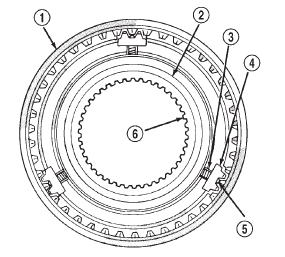
Fig. 58 Assembled View Of Synchro Compon
1 - SLEEVE
2 - HUB SHOULDER
3 - SPRING (3)
4 - STRUT (3)
5 - DETENT BALL (3)
6 - HUB
OUTPUT SHAFT
(1) Lubricate shaft, gears and bearings with recommended lubricant during assembly. Petroleum jelly can be used to hold parts in place.
(2) Check bearing surfaces of output shaft for nicks or scratches. Smooth surfaces with 320/400 grit emery cloth if necessary. Apply oil to emery cloth and shaft surface before polishing.
(3) Inspect and replace any synchro ring that exhibits wear or damage. Completely immerse each synchro ring in lubricant before installation.
(4) Lubricate and install reverse gear needle bearing on shaft (Fig. 59). Slide bearing up against shoulder on output shaft.
(5) Install reverse gear over needle bearing (Fig.
60).
(6) Install solid brass synchro ring on reverse gear (Fig. 61).

Fig. 59 Reverse Gear Bearing Installation
1 - REVERSE GEAR BEARING
2 - SHOULDER

Fig. 60 Reverse Gear Installation
1 - REVERSE GEAR

Fig. 61 Reverse Gear Synchro Ring Installation
1 - REVERSE GEAR 2 - SYNCHRO RING (SOLID BRASS)
(7) Assemble fifth-reverse synchro hub, sleeve, struts, springs and detent balls, if not previously done.
CAUTION: The fifth-reverse synchro hub and sleeve can be installed backwards if care is not exercised. One side of the hub has shoulders around the hub bore. Make sure this side of the hub is facing the front of the shaft. In addition, one side of the sleeve is tapered. Be sure the sleeve is installed so the tapered side will be facing the front of the shaft.
(8) Start fifth-reverse synchro assembly on output shaft splines by hand. Then seat synchro onto shaft with shop press and Remover 6310-1 (Fig. 62).

Fig. 62 Fifth-Reverse Synchro Assembly I
1 - SPACER
2 - PRESS RAM
3 - REVERSE GEAR
4 - FIFTH-REVERSE SYNCHRO ASSEMBLY
5 - SPECIAL TOOL
6310-1
6 - PRESS BLOCKS
7 - OUTPUT SHAFT
(9) Install new fifth-reverse hub snap ring (Fig.
63) as follows: (a) Snap rings are available in thicknesses from 2.00 mm to 2.20 mm (0.078 to 0.086 in.).
(b) Install thickest snap ring that will fit in shaft groove.
(c) Verify that snap ring is completely seated in groove before proceeding.

Fig. 63 Installing Fifth-Reverse Synchro Hub Snap Ring
1 - FIFTH-REVERSE SYNCHRO ASSEMBLY
2 - SNAP RING
3 - PRESS BED
4 - PRESS BLOCKS

Fig. 64 Installing Fifth Gear Synchro Ring
1 - FIFTH-SPEED SYNCHRO RING
2 - FIFTH-REVERSE SYNCHRO ASSEMBLY
(11) Install fifth gear bearing. Spread bearing only enough to clear shoulder on output shaft (Fig. 65). Be sure bearing is properly seated after installation.
(12) Install fifth gear on shaft and onto bearing (Fig. 66).

Fig. 65 Installing Fifth Gear Bearing
1 - SHAFT SHOULDER
2 - FIFTH GEAR BEARING

Fig. 66 Fifth Gear Installation
1 - FIFTH GEAR
2 - BEARING
(13) Invert output shaft and set the shaft in Remover 6310-1 so that fifth gear is seated on the tool (Fig. 67).
(14) Install first gear bearing on output shaft (Fig.
67). Be sure bearing is seated on shaft shoulder and is properly joined.
(15) Install first gear on shaft and over bearing (Fig. 68). Make sure bearing synchro cone is facing up as shown.

Fig. 67 First Gear Bearing Installation
1 - FIRST GEAR BEARING
2 - SHAFT SHOULDER
3 - SPECIAL TOOL
6310-1
4 - PRESS BLOCKS

Fig. 68 First Gear Installation
1 - FIRST GEAR
2 - SPECIAL TOOL
6310-1
3 - BEARING
(16) Install first gear synchro ring (Fig. 69).

Fig. 69 First Gear Synchro Ring Installation
1 - FIRST GEAR SYNCHRO RING
2 - SPECIAL TOOL 6310-1
3 - FIRST GEAR
(17) Assemble 1-2 synchro hub sleeve, springs, struts and detent balls.
CAUTION: The 1-2 synchro hub and sleeve can be installed backwards if care is not exercised. One side of the synchro sleeve is marked First Gear Side. Be sure this side of the sleeve will face first gear after installation.
(18) Start 1-2 synchro assembly on shaft by hand (Fig. 70). Be sure synchro sleeve is properly positioned.
Side marked first side must be facing first gear.

Fig. 70 Starting 1-2 Synchro On Shaft
1 - 1-2 SYNCHRO ASSEMBLY
2 - SPECIAL TOOL 6310-1
3 - BE SURE THIS IS "FIRST GEAR SIDE" OF SYNCHRO
SLEEVE
(19) Press 1-2 synchro onto output shaft using suitable size pipe tool and shop press (Fig. 71).
CAUTION: Take time to align the synchro ring and sleeve as hub the is being pressed onto the shaft.
The synchro ring can be cracked if it becomes misaligned.

Fig. 71 Pressing 1-2 Synchro Assembly Onto Output Shaft
1 - SUITABLE SIZE PIPE TOOL
2 - SYNCHRO RING
3 - SPECIAL TOOL
6310-1
4 - 1-2 SYNCHRO ASSEMBLY
5 - PRESS RAM
(20) Install interm ring.
(21) Install new 1-2 synchro hub snap ring (Fig.
72) as follows: (a) Snap rings are available in thicknesses from 1.80 mm to 2.00 mm (0.070 to 0.078 in.).
(b) Install thickest snap ring that will fit in shaft groove.
(c) Verify that snap ring is completely seated in groove before proceeding.
(22) Install second gear synchro ring in 1-2 synchro hub and sleeve (Fig. 73). Be sure synchro ring is properly seated in sleeve.

Fig. 72 Installing 1-2 Synchro Hub Snap Ring
1 - 1-2 SYNCHRO
2 - SPECIAL TOOL
6310-1
3 - SYNCHRO SNAP RING
(23) Install synchro friction cone and synchro cone in synchro ring.

Fig. 73 Second Gear Synchro Ring Installation
1 - SECOND GEAR SYNCHRO RING
2 - 1-2 SYNCHRO
3 - SPECIAL TOOL
6310-1
(24) Install second gear needle bearing on shaft (Fig. 74).

Fig. 74 Second Gear Bearing Installation
1 - SECOND GEAR BEARING
2 - SPECIAL TOOL
6310-1
(25) Install second gear onto shaft and bearing (Fig. 75). Make sure that second gear is fully seated on synchro components.

Fig. 75 Second Gear Installation
1 - SPECIAL TOOL
6310-1
2 - 1-2 SYNCHRO ASSEMBLY
3 - BEARING
4 - SECOND GEAR
(26) Install two-piece thrust washer (Fig. 76). Be sure washer halves are seated in shaft groove and that washer lugs are seated in shaft lug bores. Also, ensure that the i.d. grooves and markings noted during removal are facing the correct direction.

Fig. 76 Installing Two-Piece Thrust Washer
1 - WASHER GROOVE IN SHAFT
2 - LUG BORE
3 - THRUST WASHER LUGS
4 - LUG BORE
5 - LUG
6 - WASHER HALF
(27) Start retaining ring around two-piece thrust washer (Fig. 77). Make sure that the locating dimple is between the thrust washer halves.
(28) Seat thrust washer retaining ring with plastic mallet (Fig. 78).

Fig. 77 Starting Retaining Ring Over Two-Piece Thrust Washer
1 - THRUST WASHER RETAINING RING
2 - THRUST WASHER HALVES
3 - SECOND GEAR
4 - LOCATING DIMPLE

Fig. 78 Seating Thrust Washer Retaining Ring
1 - PLASTIC MALLET
2 - THRUST WASHER RETAINING RING
(29) Install third gear needle bearing on shaft (Fig.
79).

Fig. 79 Third Gear Bearing Installation
1 - THIRD GEAR BEARING
(30) Install third gear on shaft and bearing (Fig.
80).

Fig. 80 Installing Third Gear
1 - THIRD GEAR
2 - BEARING
(31) Install third speed synchro ring on third gear (Fig. 81).
(32) Assemble 3-4 synchro hub, sleeve, springs, struts and detent balls.
CAUTION: The 3-4 synchro hub and sleeve can be installed backwards if care is not exercised. One side of the sleeve has grooves in it. Be sure this side of sleeve is also facing the front of the shaft.

Fig. 81 Third Speed Synchro Ring Installation
1 - THIRD SPEED SYNCHRO RING
2 - THIRD GEAR
(33) Start 3-4 synchro hub on output shaft splines by hand (Fig. 82).

Fig. 82 Starting 3-4 Synchro Hub On Output Shaft
1 - GROOVED SIDE OF SLEEVE (TO FRONT)
2 - 3-4 SYNCHRO ASSEMBLY
(34) Press 3-4 synchro assembly onto output shaft with shop press and suitable size pipe tool (Fig. 83).
Make sure that the tool presses on hub as close to output shaft as possible but does not contact the shaft splines.

Fig. 83 Pressing 3-4 Synchro Assembly On Output Shaft
1 - PRESS RAM
2 - PIPE TOOL
3 - 3-4 SYNCHRO
4 - THIRD SPEED SYNCHRO RIN
(35) Install 3-4 synchro hub snap ring (Fig. 84) as follows: (a) Snap rings are available in thicknesses from 2.00 mm to 2.30 mm (0.078 to 0.090 in.).
(b) Install thickest snap ring that will fit in shaft groove. Use heavy duty snap ring pliers to install new ring.
(c) Verify that snap ring is completely seated in groove before proceeding.

Fig. 84 Installing 3-4 Synchro Hub Snap Ring
1 - 3-4 SYNCHRO HUB SNAP RING
2 - HEAVY DUTY SNAP RING PLIERS
(36) Install output shaft bearing.
(37) Install output shaft bearing snap ring (Fig.
85). Use heavy duty snap ring pliers and spread snap ring only enough to install it. Be sure snap ring is completely seated in shaft groove before proceeding.

Fig. 85 Installing Output Shaft Bearing Snap Ring
1 - BEARING SNAP RING
2 - HEAVY DUTY SNAP RING PLIERS
(38) Verify correct position of synchro sleeves before proceeding with assembly operations (Fig. 86).
Grooved side of 3-4 sleeve should be facing forward.
First gear side of 1-2 sleeve should be facing first gear. Tapered side of fifth-reverse sleeve should be facing forward.
REVERSE IDLER ASSEMBLY
(1) Lubricate idler components with gear lube.
(2) Slide idler gear bearing on shaft (Fig. 87).
Bearing fits either way on shaft.
(3) Slide gear onto shaft. Side of gear with recess goes to rear (Fig. 87).
(4) Place first lock ball in dimple at rear end of idler shaft (Fig. 87). Petroleum jelly can be used to hold ball in place if desired.
(5) Slide thrust rear thrust washer onto shaft and over lock ball (Fig. 88).
(6) Install snap ring in groove at rear of shaft (Fig.
88).
(7) Install lock ball in dimple at front of shaft.
Hold ball in place with petroleum jelly if desired.

Fig. 86 Correct Synchro Sleeve Position
1 - DOUBLE GROOVE FORWARD
2 - GROOVE FORWARD
3 - FIRST GEAR SIDE MARKING TOWARD FIRST GEAR
4 - TAPER FORWARD
5 - GROOVE FORWARD
6 - 5TH-REV SYNCHRO SLEEVE
7 - 1-2 SYNCHRO SLEEVE
8 - 3-4 SYNCHRO SLEEVE

Fig. 87 Idler Gear And Bearing Installation
1 - IDLER GEAR
2 - BEARING
3 - LOCK BALL
4 - REAR OF SHAFT
(8) Install front thrust washer on shaft and slide washer up against gear and over lock ball (Fig. 89).

Fig. 88 Idler Gear Rear Thrust Washer Installation
1 - LOCK BALL
2 - SNAP RING GROOVE
3 - THRUST WASHER
(9) Install wave washer, flat washer and remaining snap ring on idler shaft (Fig. 89). Be sure snap ring is fully seated.

Fig. 89 Idler Gear And Shaft Assembly
1 - REAR OF SHAFT
2 - GEAR
3 - THRUST WASHER AND BALL
4 - WAVE WASHER
5 - FLAT WASHER
6 - FRONT OF SHAFT
7 - SNAP RING
8 - SNAP RING
SHIFT SHAFT AND DETENT PLUNGER BUSHINGS/BEARINGS
(1) Inspect shift shaft bushing and bearing for damage.
(2) If necessary, the shift shaft bushing can be replaced as follows: (a) Locate a bolt that will thread into the bushing without great effort.
(b) Thread the bolt into the bushing, allowing the bolt to make its own threads in the bushing.
(c) Attach a slide hammer or suitable puller to the bolt and remove bushing.
(d) Use the short end of Installer 8119 to install the new bushing.
(e) The bushing is correctly installed if the bushing is flush with the transmission case.
(3) If necessary, the shift shaft bearing can be replaced as follows: (a) Locate a bolt that will thread into the bearing without great effort.
(b) Thread the bolt into the bearing as much as possible.
(c) Attach a slide hammer or suitable puller to the bolt and remove the bearing.
(d) Use the short end of Installer 8119 to install the new bearing.
(e) The bearing is correctly installed if the bearing is flush with the transmission case.
(4) Inspect detent plunger bushings for damage.
NOTE: The detent plunger bushings are installed to a specific depth. The space between the two bushings when correctly installed contain an oil feed hole. Do not attempt to install the bushings with anything other than the specified tool or this oil hole may become restricted.
(5) If necessary, the detent plunger bushings can be replaced as follows: (a) Using the long end of Installer 8119, drive the detent bushings through the outer case and into the shift shaft bore.
(b) Remove the bushings from the shift shaft bore.
(c) Install a new detent plunger bushing on the long end of Installer 8118.
(d) Start the bushing in the detent plunger bore in the case.
(e) Drive the bushing into the bore until the tool contacts the transmission case.
(f) Install a new detent plunger bushing on the short end of Installer 8118.
(g) Start the bushing in the detent plunger bore in the case.
(h) Drive the bushing into the bore until the tool contacts the transmission case.
GEARTRAIN ASSEMBLY
(1) Install Adapter 6747-1A on input shaft hub of fixture tool (Fig. 90). Then install Adapter 6747-2A on front bearing hub of countershaft. Adapter 6747-2A has a raised shoulder on one side. Be sure the shoulder is seated against the countershaft.
(2) Install input shaft in fixture tool. Make sure Adapter Tool 6747-1A is positioned under shaft as shown (Fig. 91).
(3) Install pilot bearing in input shaft (Fig. 91).
NOTE: There is a correct and an incorrect way to install the pilot bearing into the input shaft. The side of the pilot bearing with the small diameter goes toward the input shaft.

Fig. 90 Preparing Assembly Fixture For Geartrain Build-up
1 - SPECIAL TOOL 6747-2A (INSTALL ON COUNTERSHAFT
FRONT HUB)
2 - SPECIAL TOOL 8115
3 - SPECIAL TOOL 6747-1A
4 - SPECIAL TOOL 6747

Fig. 91 Installing Pilot Bearing In Input Shaft
1 - PILOT BEARING
2 - INPUT SHAFT
(4) Install fourth gear synchro ring on input shaft (Fig. 92).

Fig. 92 Installing Fourth Gear Synchro Ring On Input Shaft
1 - FOURTH GEAR SYNCHRO RING
2 - INPUT SHAFT
(5) Adjust height of idler gear pedestal on assembly fixture (Fig. 93). Start with a basic height of 18.4 cm (7-1/4 in.). Final adjustment can be made after gear is positioned on pedestal.

Fig. 93 Idler Pedestal Basic Height Adjus
1 - REVERSE IDLER PEDESTAL
(6) Install assembled output shaft and geartrain in input shaft (Fig. 94). Carefully rotate output shaft until the 3-4 synchro ring seats in synchro hub and sleeve.

Fig. 94 Output Shaft And Geartrain Installed In Input Shaft
1 - OUTPUT SHAFT AND GEARTRAIN
2 - INPUT SHAFT
3 - SPECIAL TOOL
6747
(7) Install Adapter 6747-2A on front bearing hub of countershaft, if not previously done. The adapter has a shoulder on one side. The shoulder goes toward the countershaft.
(8) Slide countershaft (and adapter) into fixture slot. Verify that countershaft and output shaft gears are fully meshed with the mainshaft gears before proceeding (Fig. 95).
(9) Check alignment of countershaft and output shaft gear teeth. Note that gears may not align perfectly.
A difference in height of 1.57 to 3.18 mm (1/16 to 1/8 in.) will probably exist. This difference will not interfere with assembly. However, if the difference is greater than this, the countershaft adapter tool is probably upside down. Remove countershaft, reverse adapter tool, reinstall countershaft and check alignment again.

Fig. 95 Countershaft Installed On Fixture Tool
1 - OUTPUT SHAFT AND GEARTRAIN
2 - COUNTERSHAFT (SLIDE INTO PLACE ON FIXTURE TOOL)
(10) Position reverse idler in support cup of assembly fixture (Fig. 96). Be sure idler gear is properly meshed and aligned with shaft gear teeth and that bolt holes are facing out and not toward geartrain.
Adjust pedestal up or down if necessary. Also be sure that short end of idler shaft is facing up as shown.

Fig. 96 Reverse Idler Assembly Positioned On Assembly Fixture Pedestal
1 - OUTPUT SHAFT AND GEARTRAIN
2 - COUNTERSHAFT
3 - REVERSE IDLER ASSEMBLY
4 - TOOL PEDESTAL
(11) On 2-wheel drive transmission, thread one Pilot Stud 8120 in center or passenger side hole of output shaft bearing retainer. Then position retainer on fifth gear as shown (Fig. 97).
(12) Assemble 1-2 and fifth reverse-shift forks (Fig.
98). Arm of fifth-reverse fork goes through slot in 1-2 fork.

Fig. 97 Positioning Output Shaft Bearing Retainer For Rear Housing
Installation
1 - SPECIAL TOOL
8120
2 - OUTPUT SHAFT BEARING RETAINER

Fig. 98 Assembling 1-2 And Fifth-Reverse Shift Forks
1 - INSERT ARM THROUGH 1-2 FORK
2 - 1-2 FORK
3 - FIFTH-REVERSE FORK
(13) Install assembled shift forks in synchro sleeves (Fig. 99). Be sure forks are properly seated in sleeves.

Fig. 99 Shift Forks Installed In Synchro Sleeves
1 - SYNCHRO SLEEVES
2 - FORK ARMS
3 - SHIFT FORKS
REAR HOUSING-2WD
(1) Drive adapter housing alignment dowels back into housing until dowels are flush with mounting surface (Fig. 100).

Fig. 100 Preparing Rear Housing Dowels For Installation
1 - HOUSING ALIGNMENT DOWELS
2 - REAR HOUSING
3 - DOWEL FLUSH WITH SURFACE
(2) Apply liberal quantity of petroleum jelly to countershaft rear bearing and bearing race.
(3) Install countershaft rear bearing in bearing race (Fig. 101).
CAUTION: The countershaft bearings can be installed backwards if care is not exercised. Be sure the large diameter side of the roller retainer faces the countershaft and the small diameter side faces the race and housing (Fig. 102).
(4) Apply extra petroleum jelly to hold countershaft rear bearing in place when housing is installed.
(5) Apply light coat of petroleum jelly to shift shaft bushing/bearing in rear housing (Fig. 102).
(6) Reach into countershaft rear bearing with finger, and push each bearing roller outward against race. Then apply extra petroleum jelly to hold rollers in place. This avoids having rollers becoming displaced during housing installation. This will result in misalignment between bearing and countershaft bearing hub.

Fig. 101 Lubricating Countershaft Rear Bearing
1 - COUNTERSHAFT REAR BEARING
2 - REAR BEARING RACE
3 - REAR HOUSING
4 - PETROLEUM JELLY (APPLY TO BEARING AND RACE)

Fig. 102 Countershaft Rear Bearing Seated In Seated in Race
1 - SHIFT SHAFT BUSHING/BEARING
2 - COUNTERSHAFT REAR BEARING (SEATED IN RACE)
(7) Install rear housing onto geartrain (Fig. 103).
Be sure bearing retainer pilot stud is in correct bolt hole in housing. Also be sure countershaft and output shaft bearings are aligned in housing and on countershaft.
It may be necessary to lift upward on countershaft slightly to ensure that the countershaft rear bearing engages to the countershaft before the rear output shaft bearing engages the housing.

Fig. 103 Rear Housing Installation-2WD
1 - REAR HOUSING
2 - SHIFT FORKS AND GEARTRAIN
(8) Seat rear housing on output shaft rear bearing and countershaft. Use plastic or rawhide mallet to tap housing into place.
(9) Install the three bolts that secure rear bearing retainer to rear housing as follows: (a) Apply Mopart Gasket Maker, or equivalent, to bolt threads, bolt shanks and under bolt heads (Fig. 104).
(b) Start first two bolts in retainer (Fig. 105). It may be necessary to move retainer rearward (with pilot stud) in order to start bolts in retainer.
(c) Remove Pilot Stud 8120 and install last retainer bolt (Fig. 105).
(d) Tighten all three retainer bolts to 30-35 N·m (22-26 ft. lbs.) torque.

Fig. 104 Applying Sealer To Retainer And Housing Bolts
1 - MOPAR GASKET MAKER (OR LOCTITE 518)
2 - RETAINER AND HOUSING BOLTS
3 - APPLY SEALER TO UNDERSIDE OF BOLT HEAD, SHANK
AND THREADS

Fig. 105 Removing Pilot Stud Tool And Installing Retainer Bolts-2WD
1 - BEARING RETAINER BOLT
2 - SPECIAL TOOL 8120
ADAPTER HOUSING-4WD
(1) Install rear bearing in adapter housing. Use wood hammer handle or wood dowel to tap bearing into place.
(2) Position rear bearing retainer in adapter housing (Fig. 106).

Fig. 106 Preparing Adapter Housing For Installation-4WD
1 - BEARING RETAINER
2 - RETAINER BOLTS (3)
3 - IDLER SHAFT NOTCH
4 - COUNTERSHAFT REAR BEARING RACE
5 - REAR BEARING
(3) Apply Mopart Gasket Maker, or equivalent, to threads, bolt shanks and under hex heads of bearing retainer bolts (Fig. 107).
(4) Apply liberal quantity of petroleum jelly to countershaft rear bearing and bearing race.
(5) Install countershaft rear bearing in bearing race (Fig. 102).
CAUTION: The countershaft bearings can be installed backwards if care is not exercised. Be sure the large diameter side of the roller retainer faces the countershaft and the small diameter side faces the race and housing (Fig. 102).
(6) Apply extra petroleum jelly to hold countershaft rear bearing in place when housing is installed.
(7) Apply light coat of petroleum jelly to shift shaft bushing/bearing in adapter housing (Fig. 102).
(8) Install adapter housing on geartrain.
(9) Install rear bearing snap ring on output shaft (Fig. 107).

Fig. 107 Installing Rear Bearing Snap Ring-4WD
1 - HEAVY DUTY SNAP RING PLIERS
2 - REAR BEARING SNAP RING
3 - OUTPUT SHAFT
(10) Lubricate lip of new rear seal (Fig. 108) with Mopart Door Ease, or transmission fluid.
(11) Install new rear seal in adapter housing bore with Installer C-3860-A. Be sure seal is fully seated in housing bore (Fig. 108).

Fig. 108 Rear Seal Installation-4WD
1 - REAR SEAL
2 - SEAL LIP
3 - OUTPUT SHAFT
SHIFT SHAFT, SHAFT LEVER AND BUSHING AND SHIFT SOCKET
(1) Before proceeding, verify that all synchro sleeves are in Neutral position (centered on hub).
Move sleeves into neutral if necessary.
CAUTION: The transmission synchros must all be in Neutral position for proper reassembly. Otherwise, the housings, shift forks and gears can be damaged during installation of the two housings.
(2) Install 3-4 shift fork in synchro sleeve (Fig.
109). Verify that groove in fork arm is aligned with grooves in 1-2 and fifth-reverse fork arms as shown.

Fig. 109 Installing 3-4 Shift Fork
1 - 3-4 FORK
2 - ALIGN GROOVES IN FORK ARM
(3) Slide shift shaft through 3-4 shift fork (Fig.
110). Be sure shaft detent notches are to front.
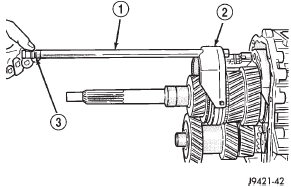
Fig. 110 Shift Shaft Installation
1 - SHIFT SHAFT
2 - 3-4 FORK
3 - SHAFT DETENT NOTCHES
(4) Assemble shift shaft shift lever and bushing (Fig. 111). Be sure slot in bushing is facing up and roll pin hole for lever is aligned with hole in shaft.
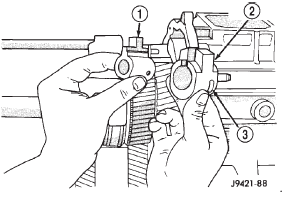
Fig. 111 Assembling Shift Shaft Lever And Bushing
1 - SHAFT LEVER
2 - LEVER BUSHING
3 - BUSHING LOCK PIN SLOT
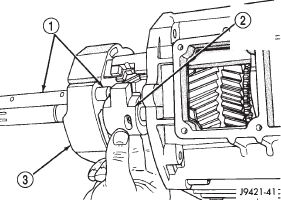
Fig. 112 Installing Shift Shaft Lever And Bushing
1 - SHIFT SHAFT
2 - SHAFT LEVER AND BUSHING
3 - 3-4 FORK
(6) Slide shift shaft through 1-2 and fifth-reverse fork and into shift lever opening in rear housing (Fig.
113).
(7) Align shift socket with shaft and slide shaft through socket and into shift shaft bearing in rear housing (Fig. 114).
(8) Rotate shift shaft so detent notches in shaft are facing the TOP of the transmission housing.
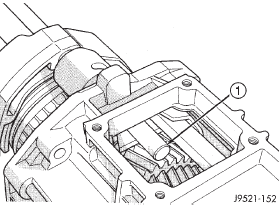
Fig. 113 Inserting Shaft Into Lever Opening In Housing
1 - SHIFT SHAFT
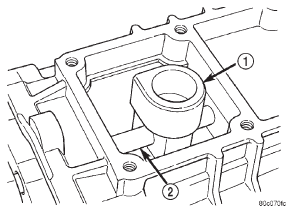
Fig. 114 Shift Socket Installation
1 - SHIFT SOCKET
2 - SHIFT SHAFT
CAUTION: Correct positioning of the shift shaft detent notch is important. Both of the shaft roll pins can be installed even when the shaft is 180 off. If this occurs, the transmission will have to be disassembled again to correct shaft alignment.
(9) Select correct new roll pin for shift shaft lever (Fig. 115). Shaft lever roll pin is approximately 22 mm (7/8 in.) long. Shift socket roll pin is approximately 33 mm (1-1/4 in.) long.
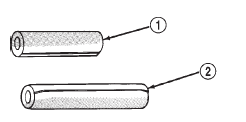
Fig. 115 Roll Pin Identification-Shaft Lever And Shift Socket
1 - SHAFT LEVER ROLL PIN
2 - SHIFT SOCKET ROLL PIN
(10) Align roll pin holes in shift shaft, lever and bushing. Then start roll pin into shaft lever by hand (Fig. 116).
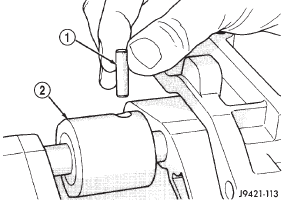
Fig. 116 Starting Roll Pin In Shift Shaft Lever
1 - SHAFT LEVER ROLL PIN (7⁄8" LONG)
2 - LEVER AND BUSHING
(11) Seat shaft lever roll pin with pin punch (Fig.
117).
CAUTION: The shaft lever roll pin must be flush with the surface of the lever. The lever bushing will bind on the roll pin if the pin is not seated flush.
(12) Before proceeding, verify that lock pin slot in lever bushing is positioned as shown (Fig. 117).
(13) Align roll pin holes in shift socket and shift shaft. Then start roll pin into shift shaft by hand (Fig. 118).
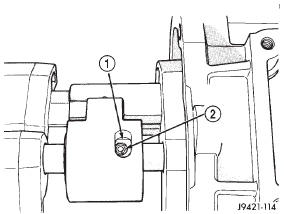
Fig. 117 Correct Seating Of Shift Shaft Lever Roll Pin
1 - BUSHING LOCK PIN SLOT
2 - SEAT ROLL PIN FLUSH WITH LEVER
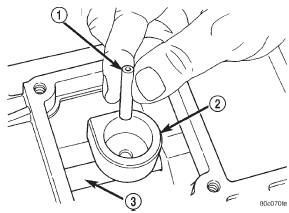
Fig. 118 Starting Roll Pin In Shift Socket
1 - ROLL PIN
2 - SHIFT SOCKET
3 - SHIFT SHAFT
(14) Seat roll pin in shift socket with pin punch.
Roll pin must be flush with socket after installation (Fig. 119).
(15) Verify that notches in shift fork arms are aligned. Realign arms if necessary.
FRONT HOUSING AND INPUT SHAFT BEARING RETAINER
(1) If previously removed, install input shaft bearing in front housing bore (Fig. 120). Install snap ring and use plastic mallet to seat bearing. Bearing goes in from front side of housing only.
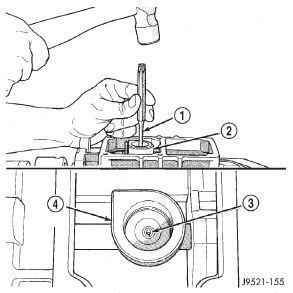
Fig. 119 Seating Shift Socket Roll Pin
1 - PIN PUNCH
2 - SHIFT SOCKET
3 - SEAT ROLL PIN FLUSH
4 - SHIFT SOCKET
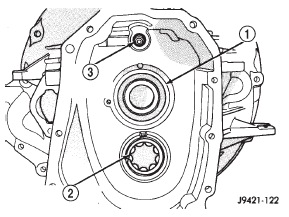
Fig. 120 Input Shaft Bearing And Countershaft Front Bearing
1 - INPUT SHAFT BEARING
2 - COUNTERSHAFT FRONT BEARING
3 - SHIFT SHAFT BUSHING
(2) Apply liberal quantity of petroleum jelly to countershaft front bearing. Then insert bearing in front housing race (Fig. 120). Large diameter side of bearing cage goes toward countershaft (Fig. 121).
Small diameter side goes toward bearing race in housing.
(3) Reach into countershaft front bearing with finger, and push each bearing roller outward against race. Then apply extra petroleum jelly to hold rollers in place. This avoids having rollers becoming displaced during housing installation. This will result in misalignment between bearing and countershaft bearing hub.
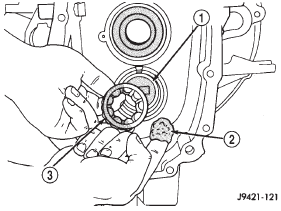
Fig. 121 Lubricating/Positioning Countershaft Front Bearing
1 - BEARING RACE
2 - PETROLEUM JELLY
3 - COUNTERSHAFT FRONT BEA
(4) Apply small amount of petroleum jelly to shift shaft bushing in front housing.
(5) Apply 1/8 in. wide bead of Mopart Gasket Maker, or equivalent, to mating surfaces of front and rear housings (Fig. 122).
(6) Have helper hold rear housing and geartrain in upright position. Then install front housing on rear housing and geartrain.
(7) Work front housing downward onto geartrain until seated on rear housing.
CAUTION: If the front housing will not seat on the rear housing, either the shift components are not in Neutral, or one or more components are misaligned.
Do not force the front housing into place.
This will only result in damaged components.
(8) Tap rear housing alignment dowels back into place with hammer and pin punch. Both dowels should be flush fit in each housing. Have helper hold transmission upright while dowels are tapped back into place.
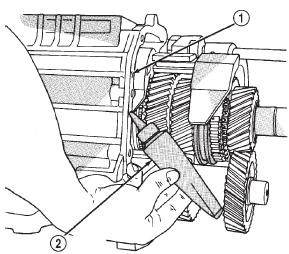
Fig. 122 Applying Sealer To Front/Rear Housings
1 - HOUSING FLANGE SURFACE
2 - MOPAR GASKET MAKER (OR LOCTITE 518)
(9) Place transmission in horizontal position.
(10) Apply Mopart Gasket Maker, or equivalent, to housing attaching bolts. Apply sealer material sealer to underside of bolt heads and to bolt shanks and threads (Fig. 123).
(11) Install and start housing attaching bolts by hand (Fig. 123). Then tighten bolts to 34 N·m (25 ft.
lbs.) torque.
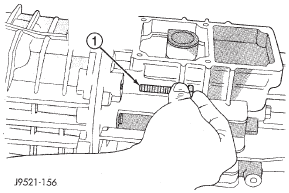
Fig. 123 Installing Housing Attaching Bolts
1 - HOUSING ATTACHING BOLTS (APPLY SEALER BEFOREHAND)
(12) Install shift shaft bushing lock bolt (Fig. 124).
Apply Mopart Gasket Maker, or equivalent, to bolt threads, shank and underside of bolt head before installation.
CAUTION: If the lock bolt cannot be fully installed, do not try to force it into place. Either the shift shaft is not in Neutral, or the shaft bushing (or lever) is misaligned.
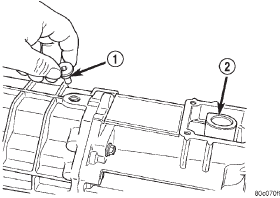
Fig. 124 Installing Shift Shaft Bushing Lock Bolt
1 - SHIFT SHAFT LOCK BOLT
2 - SHAFT SOCKET
(13) Lubricate then install shift shaft detent plunger in housing bore (Fig. 125). Lubricate plunger with petroleum jelly or gear lubricant. Be sure plunger is fully seated in detent notch in shift shaft.
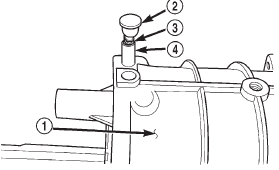
Fig. 125 Installing Shift Shaft Detent Plunger, Spring, and Plug
1 - FRONT HOUSING
2 - PLUG
3 - SPRING
4 - PLUNGER
(14) Install detent spring inside plunger (Fig. 125).
(15) Install detent plug as follows: (a) Install detent plug in end of Installer 8123.
(b) Position plug on detent spring and compress spring until detent plug pilots in detent plunger bore.
(c) Drive detent plug into transmission case until plug seats.
General information
Diagnosis and testing
Removal and installation
Disassembly and assembly
Cleaning and inspection
Specifications
Special tools
Jeep Cherokee Service Manual
- Lubrication and maintenance
- Suspension
- Differential and driveline
- Brakes
- Clutch
- Cooling system
- Battery
- Starting systems
- Charging system
- Ignition system
- Instrument panel systems
- Audio systems
- Horn systems
- Speed control system
- Turn signal and hazard warning systems
- Wiper and washer systems
- Lamps
- Passive restraint systems
- Electrically heated systems
- Power distribution systems
- Power lock systems
- Vehicle theft/security systems
- Power seat systems
- Power window systems
- Power mirror systems
- Chime/buzzer warning systems
- Overhead console systems
- Engine
- Exhaust system
- Frame and bumpers
- Frame
- Fuel system
- Steering
- Transmission and transfer case
- Tires and wheels
- Body
